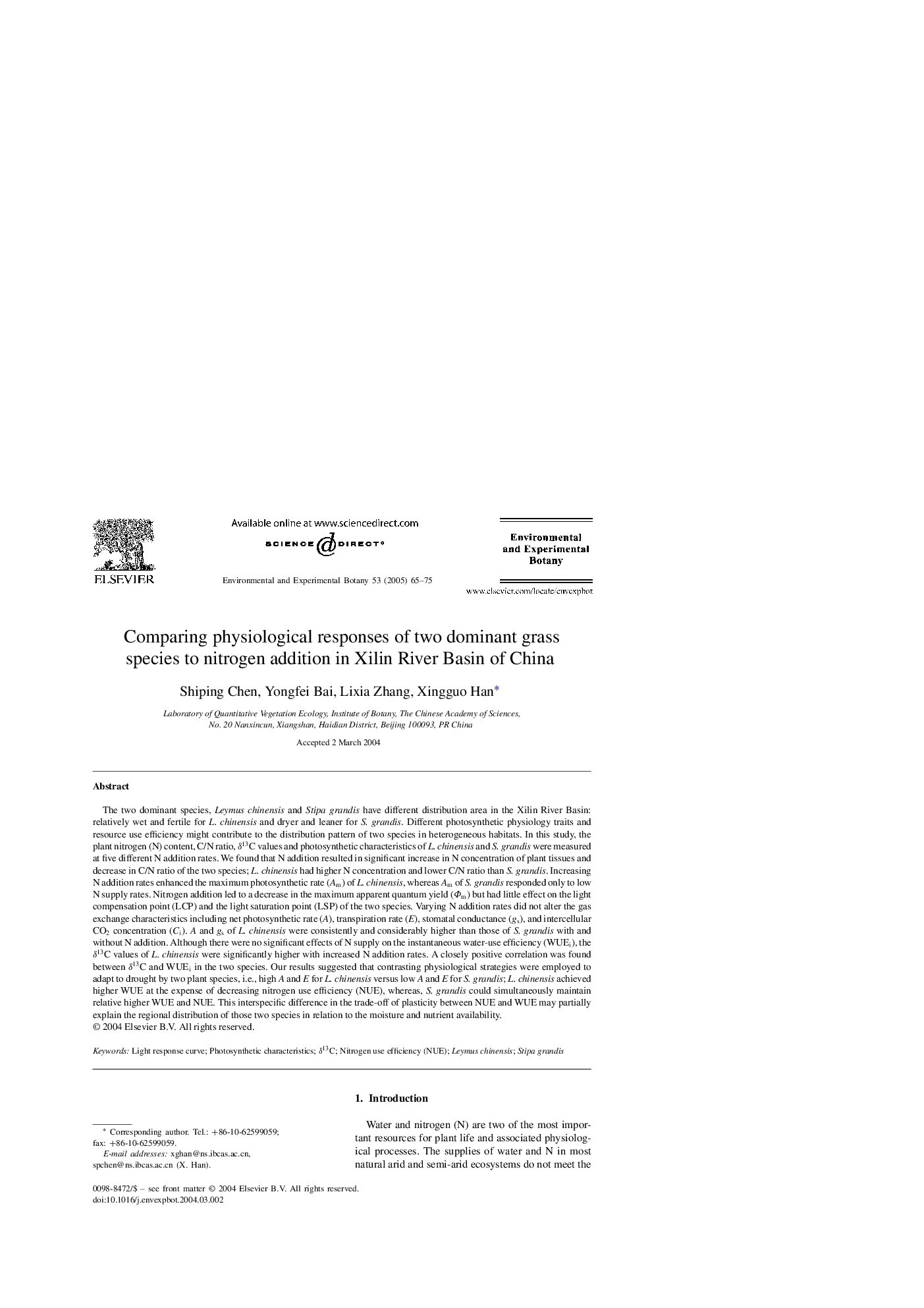| Article ID | Journal | Published Year | Pages | File Type |
|---|---|---|---|---|
| 9485726 | Environmental and Experimental Botany | 2005 | 11 Pages |
Abstract
The two dominant species, Leymus chinensis and Stipa grandis have different distribution area in the Xilin River Basin: relatively wet and fertile for L. chinensis and dryer and leaner for S. grandis. Different photosynthetic physiology traits and resource use efficiency might contribute to the distribution pattern of two species in heterogeneous habitats. In this study, the plant nitrogen (N) content, C/N ratio, δ13C values and photosynthetic characteristics of L. chinensis and S. grandis were measured at five different N addition rates. We found that N addition resulted in significant increase in N concentration of plant tissues and decrease in C/N ratio of the two species; L. chinensis had higher N concentration and lower C/N ratio than S. grandis. Increasing N addition rates enhanced the maximum photosynthetic rate (Am) of L. chinensis, whereas Am of S. grandis responded only to low N supply rates. Nitrogen addition led to a decrease in the maximum apparent quantum yield (Φm) but had little effect on the light compensation point (LCP) and the light saturation point (LSP) of the two species. Varying N addition rates did not alter the gas exchange characteristics including net photosynthetic rate (A), transpiration rate (E), stomatal conductance (gs), and intercellular CO2 concentration (Ci). A and gs of L. chinensis were consistently and considerably higher than those of S. grandis with and without N addition. Although there were no significant effects of N supply on the instantaneous water-use efficiency (WUEi), the δ13C values of L. chinensis were significantly higher with increased N addition rates. A closely positive correlation was found between δ13C and WUEi in the two species. Our results suggested that contrasting physiological strategies were employed to adapt to drought by two plant species, i.e., high A and E for L. chinensis versus low A and E for S. grandis; L. chinensis achieved higher WUE at the expense of decreasing nitrogen use efficiency (NUE), whereas, S. grandis could simultaneously maintain relative higher WUE and NUE. This interspecific difference in the trade-off of plasticity between NUE and WUE may partially explain the regional distribution of those two species in relation to the moisture and nutrient availability.
Keywords
Related Topics
Life Sciences
Agricultural and Biological Sciences
Ecology, Evolution, Behavior and Systematics
Authors
Shiping Chen, Yongfei Bai, Lixia Zhang, Xingguo Han,
